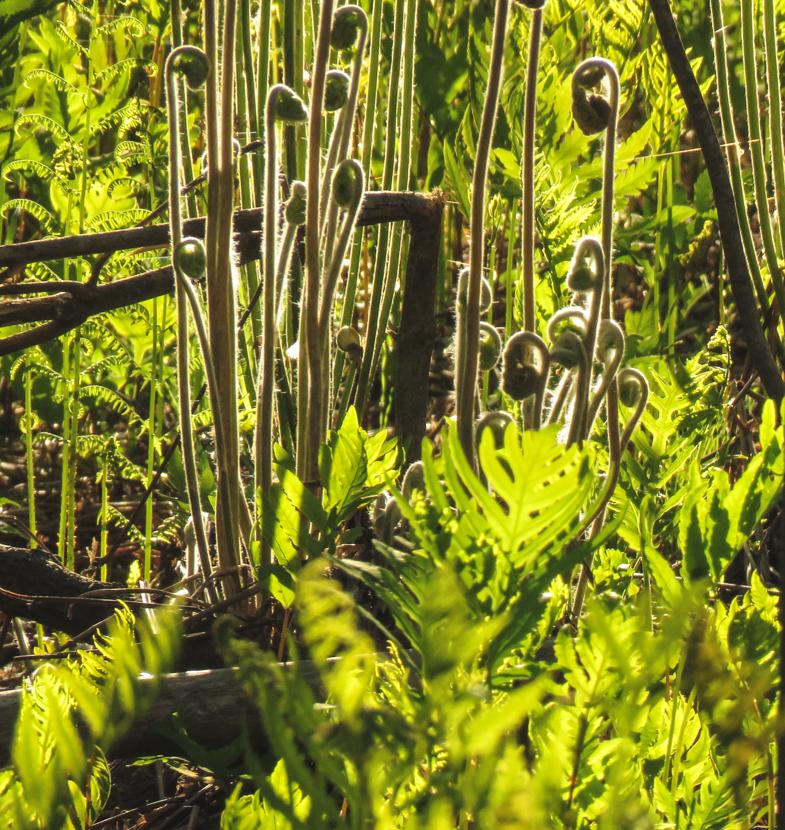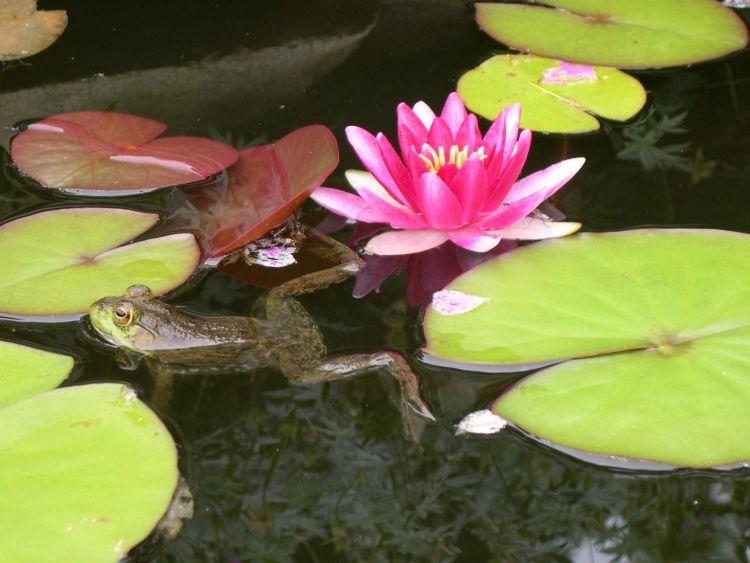- Tags:
- Wildlife,
- Something Wild

The annual ‘Great Awakening” begins with sunlight and the warming of Earth, literal earth, from mud to dry soil and the beginning of plant growth, like these spring fiddleheads growing at the Merrimack River Outdoor Education & Conservation Area. (Photo: Ellen Kenny)
"Something Wild" is joint production of NH Audubon, The Society for the Protection of New Hampshire Forests & NHPR. We recommend listening to it in its original format via NHPR but a transcript of the show is also below. (Originally aired April 22, 2022)
You can hear Something Wild on-air at NHPR every other Friday at 6:45 a.m. and 8:45 a.m., or subscribe to the Apple podcast here(link is external).
----------------------------------------------------
“In Just…Spring… when the world is mud-luscious…and puddle-wonderful,” is from the poet e.e. cummings.
We’re thinking about Earth Day literally, considering our connection with earth and how mud season really is the start of something special.
The increasing angle of the late April sun and warming of the soil are agents of great spring transformations.
Frozen earth liquefies to create a viscous medium of elemental Earth and Water. The conversion of water in lakes, rivers and snowbanks – from solid ice to liquid water and rain runoff seeping into soil – begins a fitful and unpredictable process.
And then fluid dynamics can result in boot-sucking mud - or worse!
Even the smell of mud says "it’s Spring!" That smell has a name, geosmin, which literally translates to "earth smell.” It’s an organic compound that’s also in the earthy taste of beets and carrots.
Thawing soil and overnight rains awaken all manner of insects: spiders, sowbugs, centipedes, ants, and earthworms. And that fuels the return of spring songbirds. Foraging robins, red-winged blackbirds, and grackles suddenly have food options other than seeds!

Long-dormant frogs and salamanders, creatures that spent the winter living underground frozen in soil, have begun their overnight migration and are now emerging from under the mud and leaf litter. And that means that raptors like red-shouldered hawks and barred owls can find fairly easy pickings as they prey on migrating amphibians.
Did you know that moles that eat earthworms? Chipmunks and squirrels like to eat earthworms, too! They are surprisingly carnivorous. You might find these creatures annoying if you’re a gardener, but they are all aerating the soil, which creates rich humus.
The annual ‘Great Awakening” begins with sunlight and the warming of Earth, literal earth, from mud to dry soil and the beginning of plant growth. “Mud season” quickly yields to “bud season” as hardwood trees blossom and leaves begin to unfurl, casting that pastel wash to the forest canopy. Colorful spring warblers arrive to glean awakening insects from twigs and buds and crevices of the bark.
Meanwhile down below on the forest floor, in the warming soil, if you poke around under damp leaves, that’s where you’ll find the tightly-packed, bright green fiddleheads of emerging ferns.

Spring ephemerals, the earliest seasonal wildflowers, are emerging in full sunlight before the unfurling of the tender leaves in the forest canopy casts new shade over the forest floor in May.
These wildflowers create a kind of “vernal nutrient dam” tying up nutrients and anchoring soil that might otherwise wash away in the spring rains.
May wildflowers seem to bring black flies! Black flies and ticks start to emerge when seasonal brooks are running bank-full and fields and brush provide places for ticks questing for hosts.
The light and warmth of the sun is an agent of change for drying out the earth and making it possible for plants and wildlife to resume the renewal we celebrate every spring.
Happy Earth Day!
Something Wild is a partnership between N.H. Audubon, the Forest Society, and NHPR, and is produced by the team at Outside/In.
